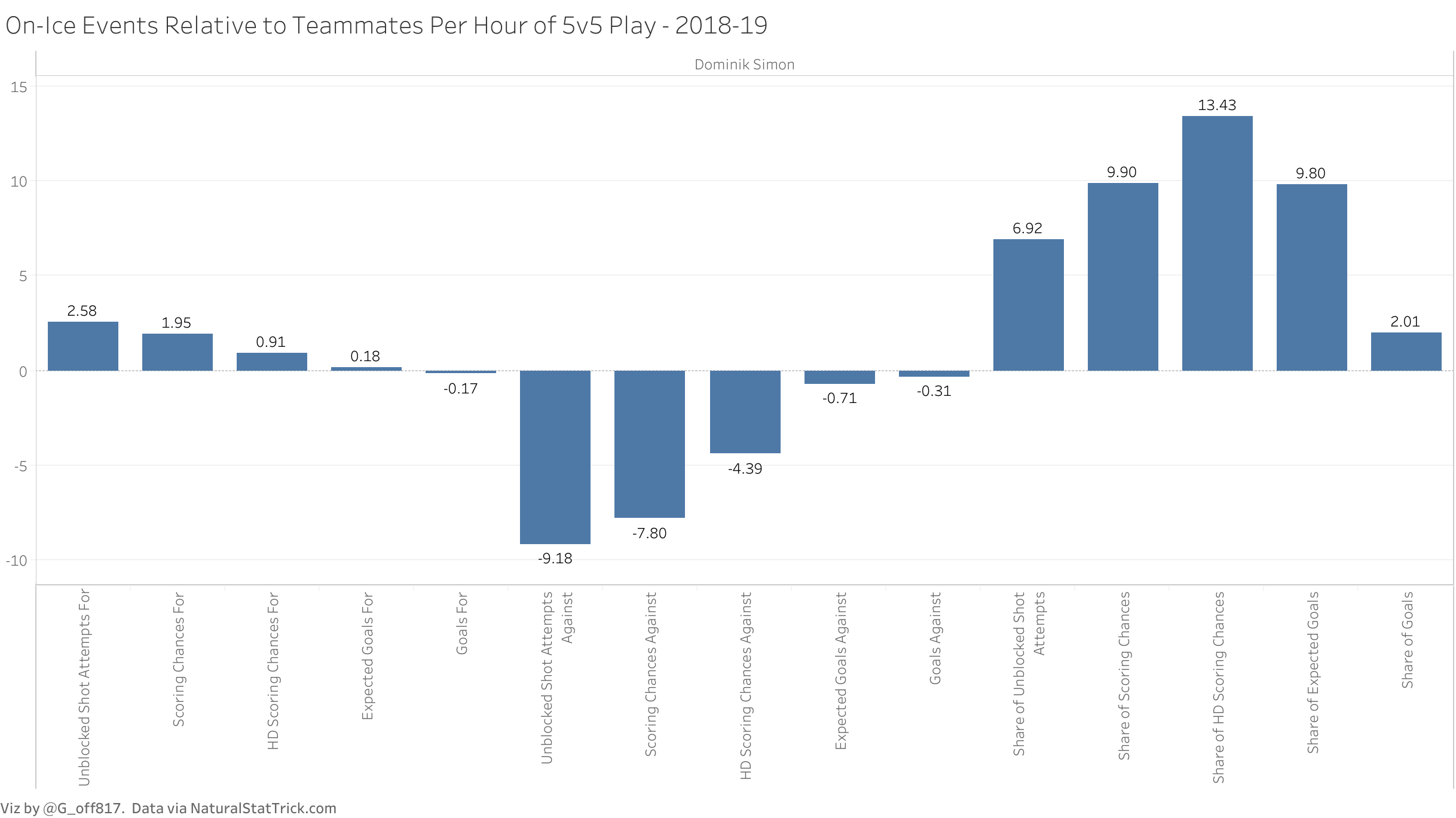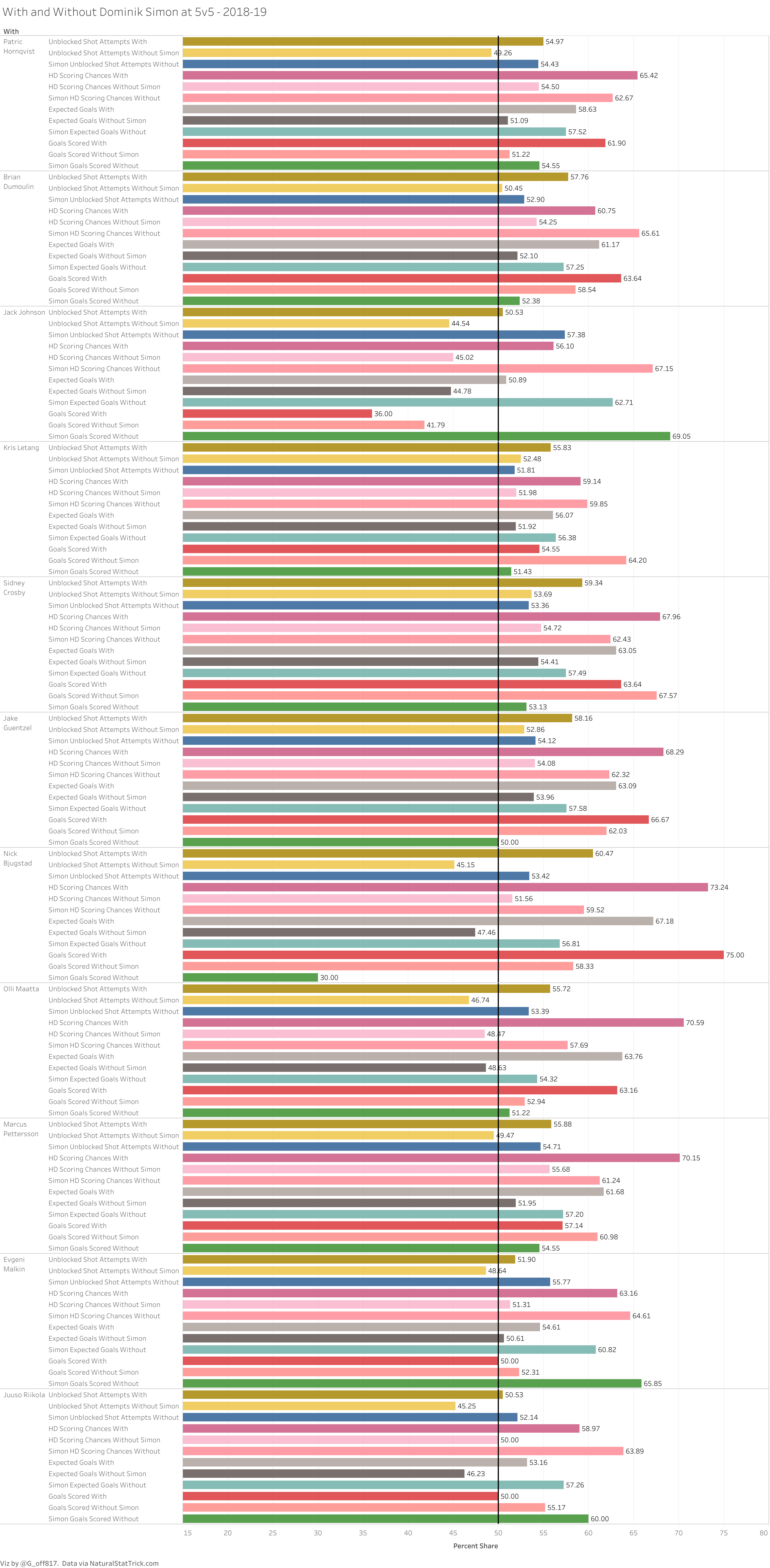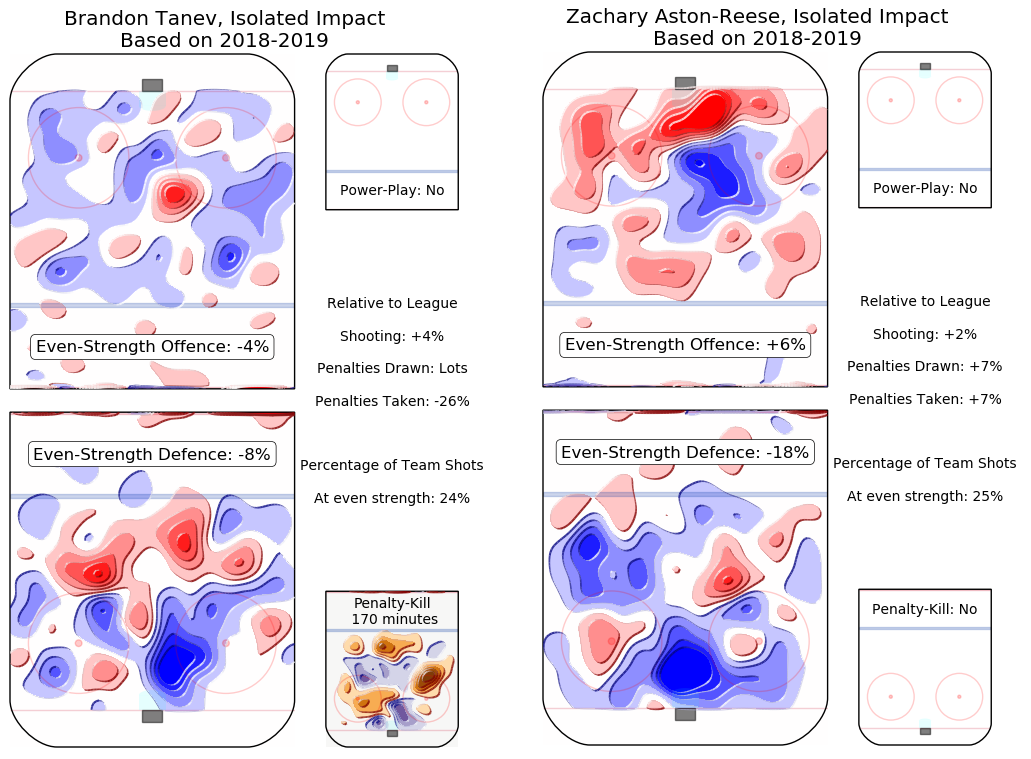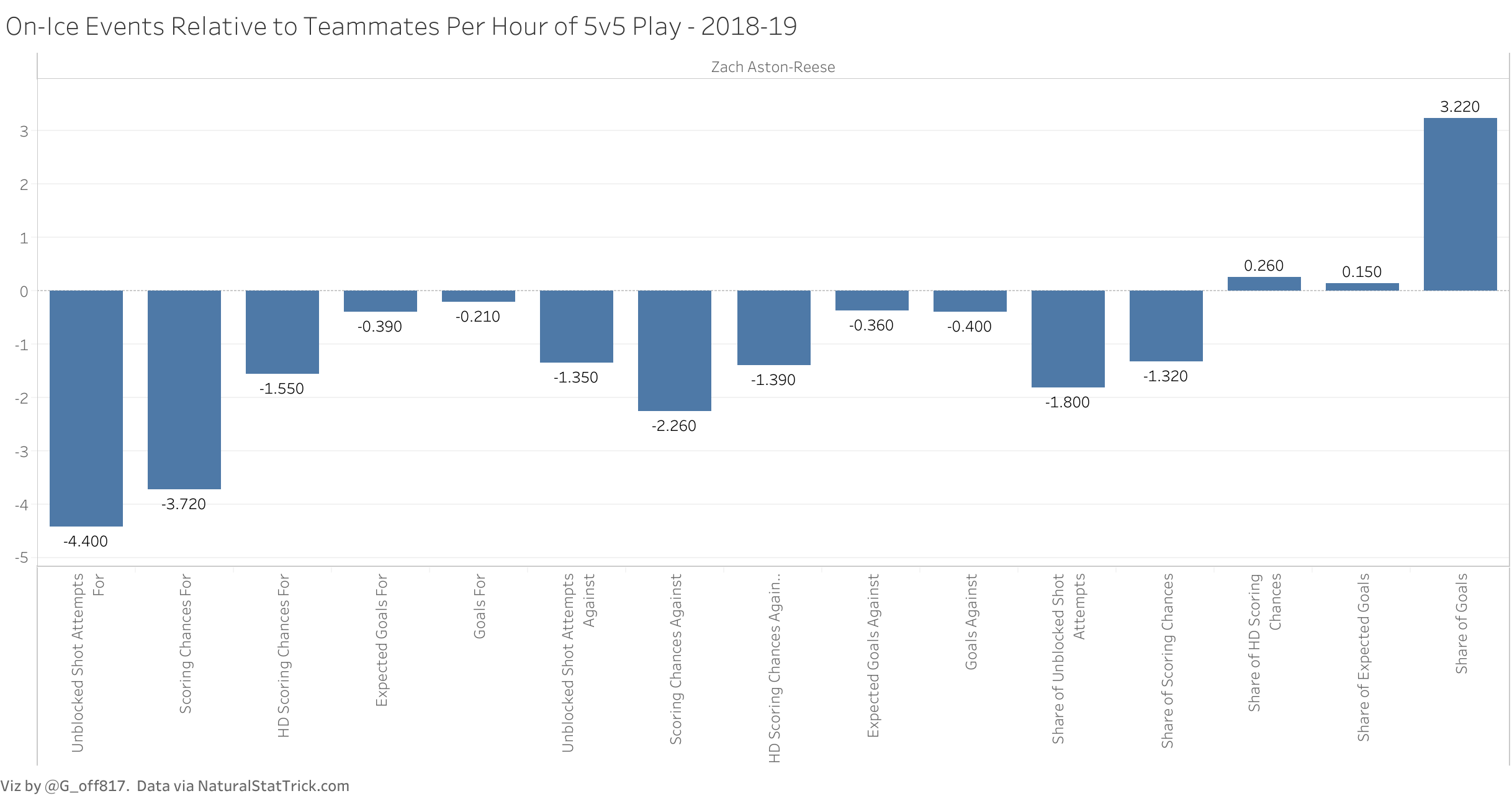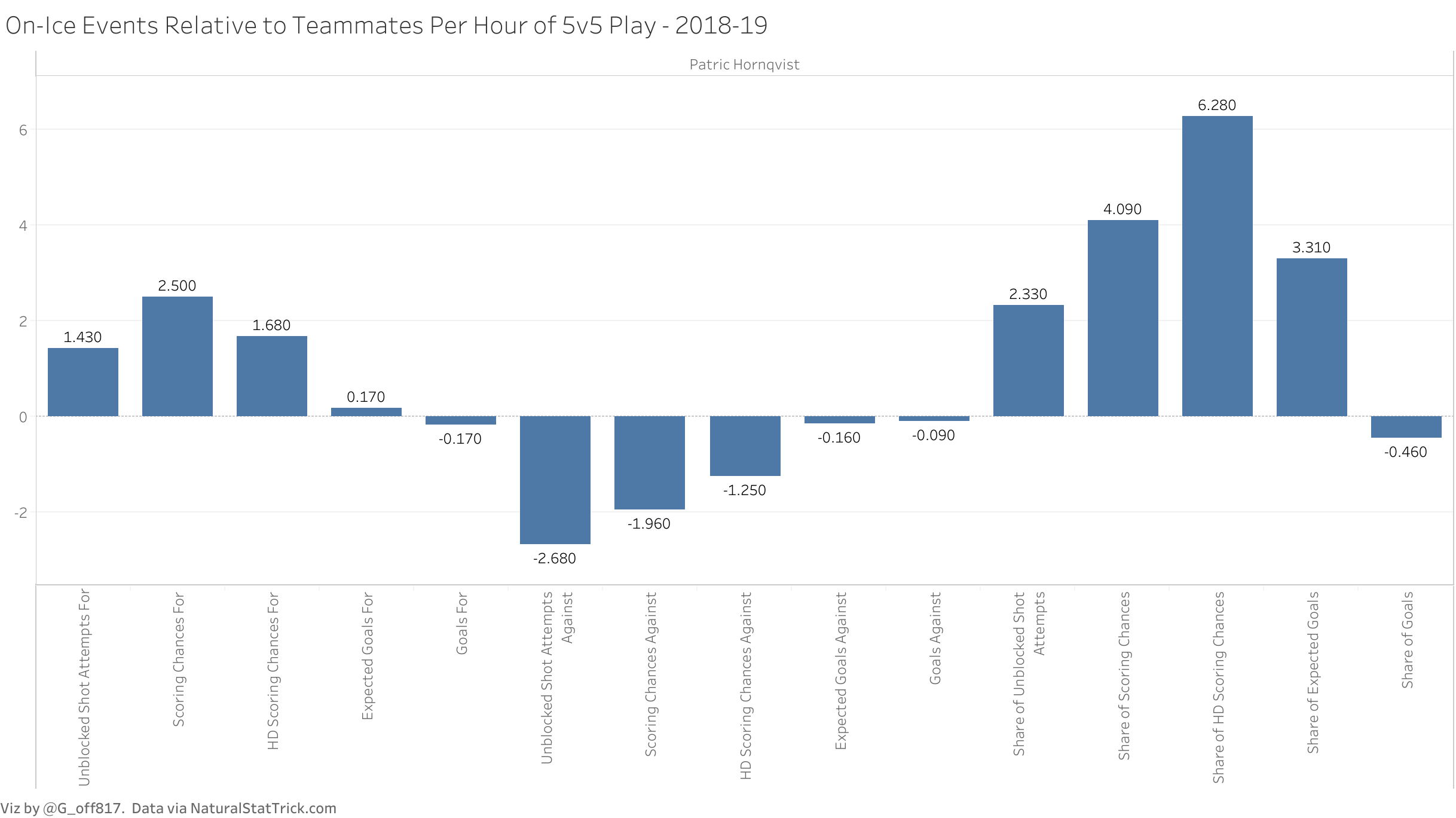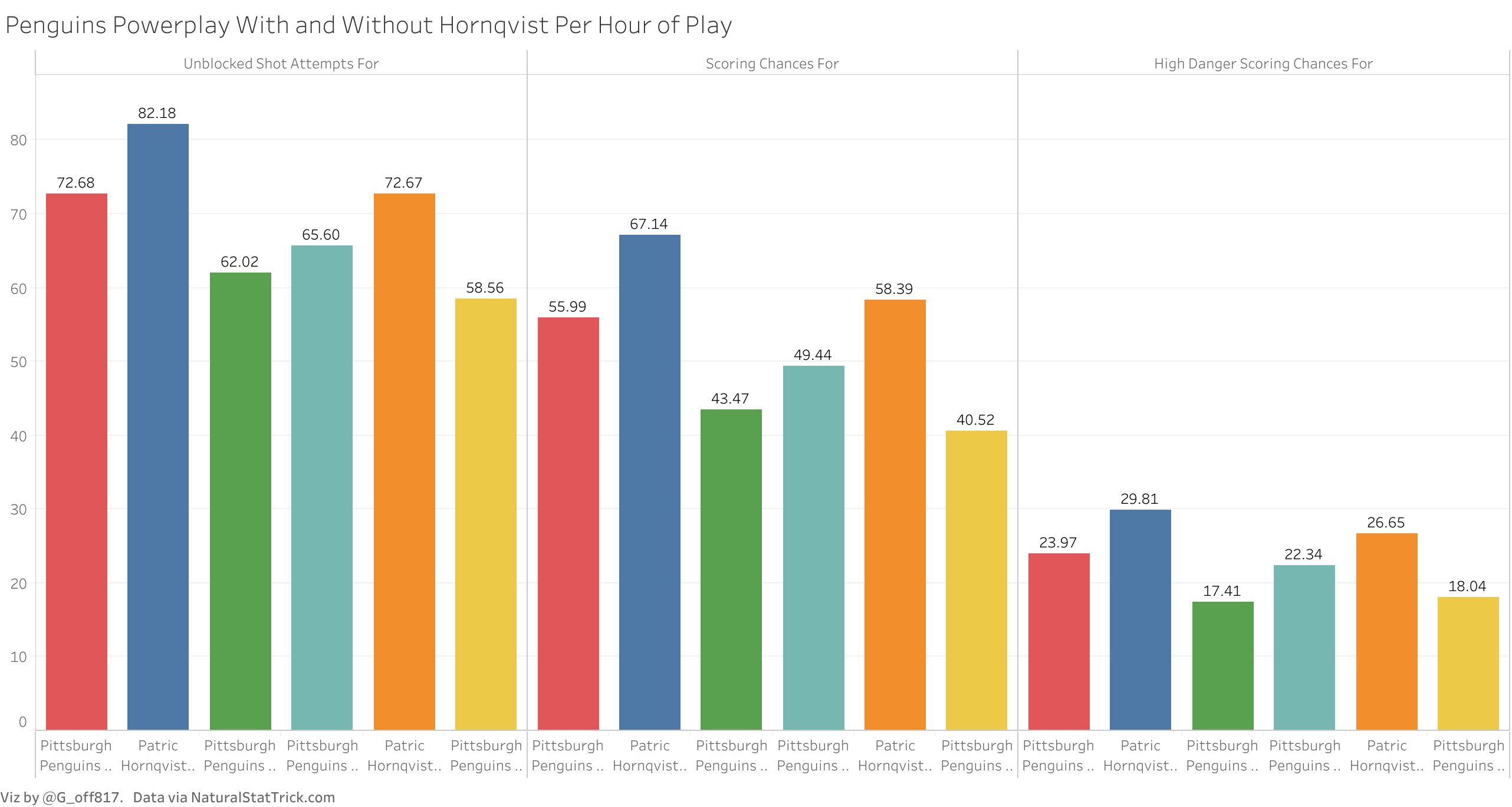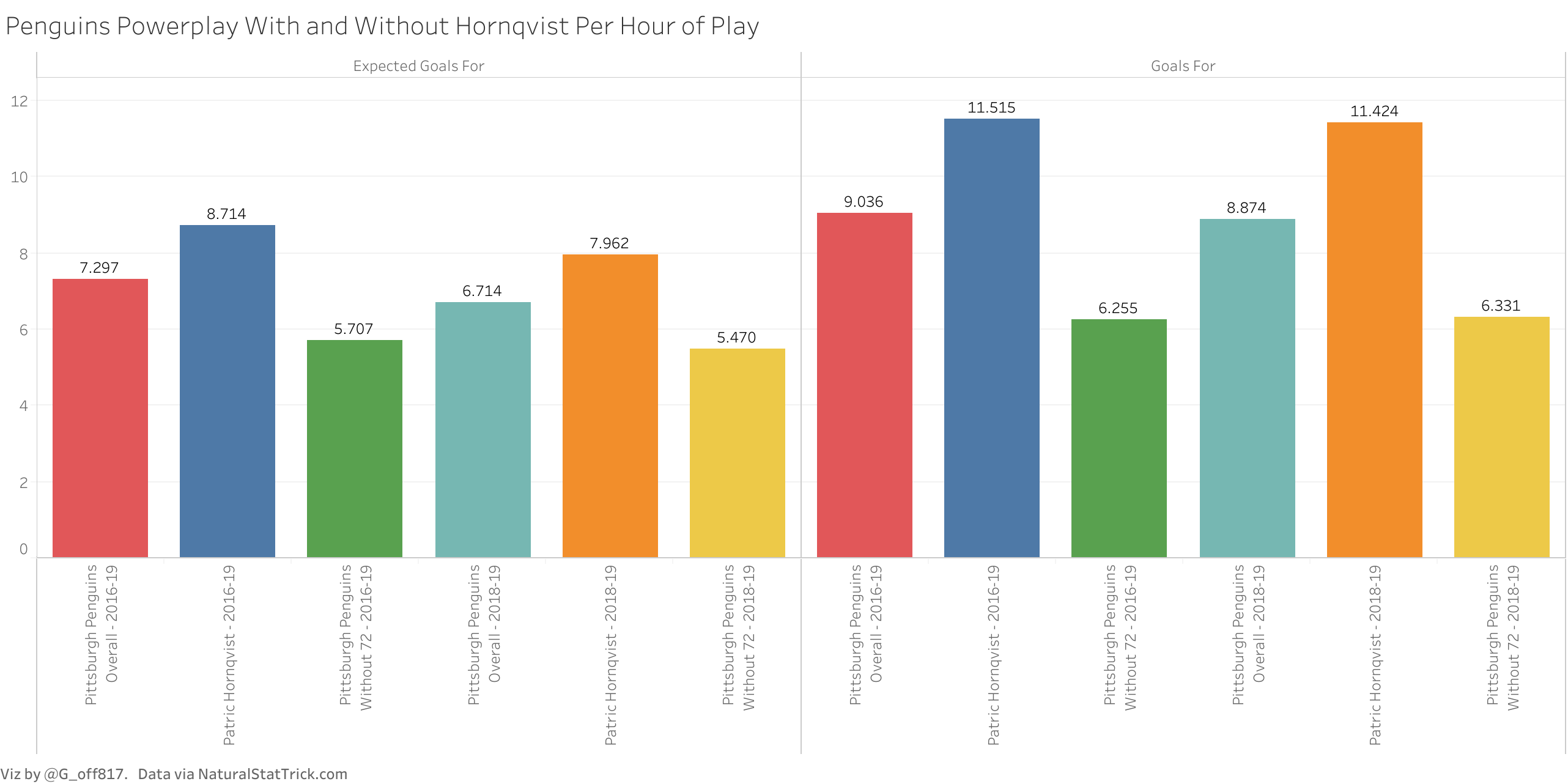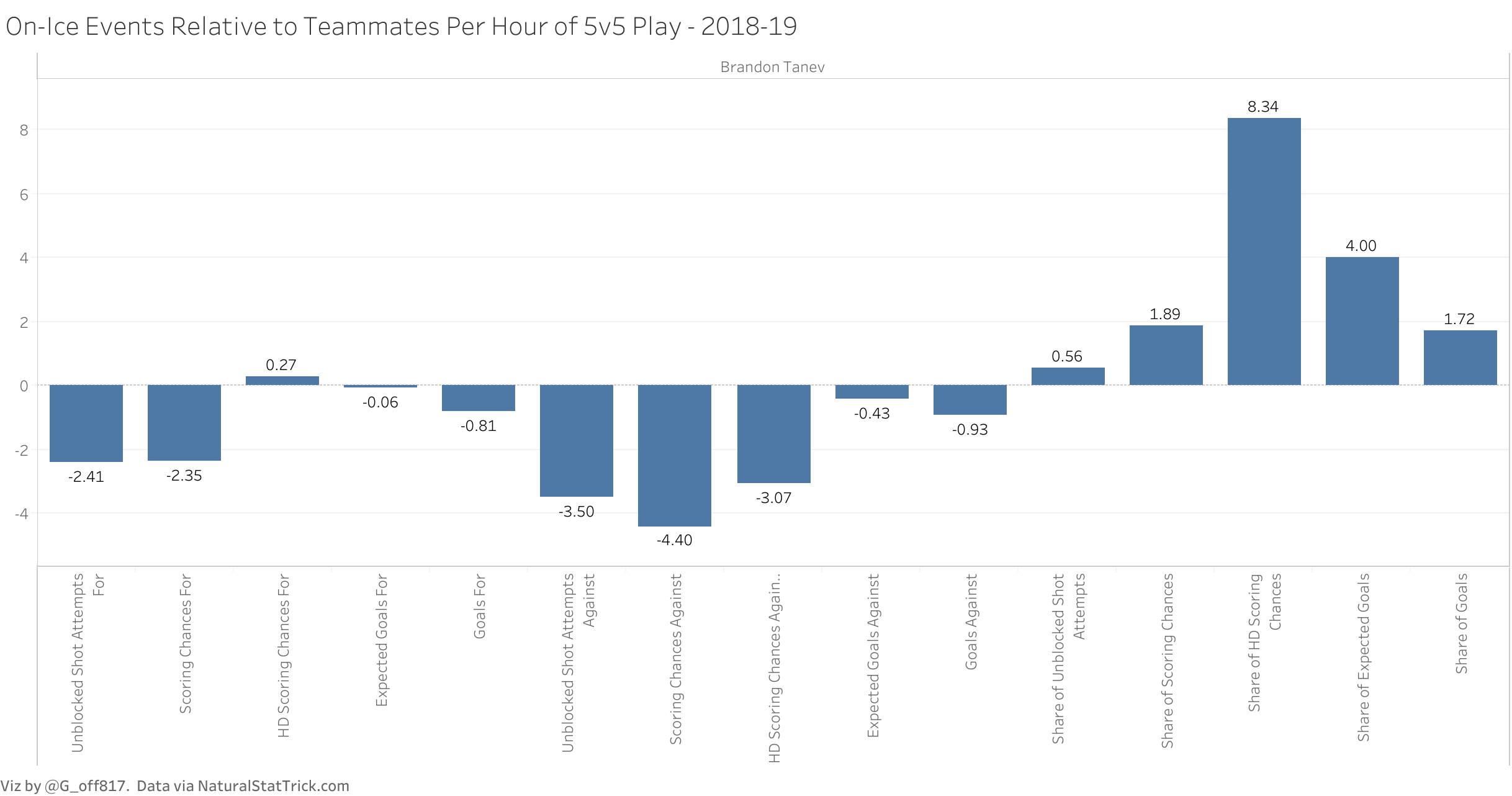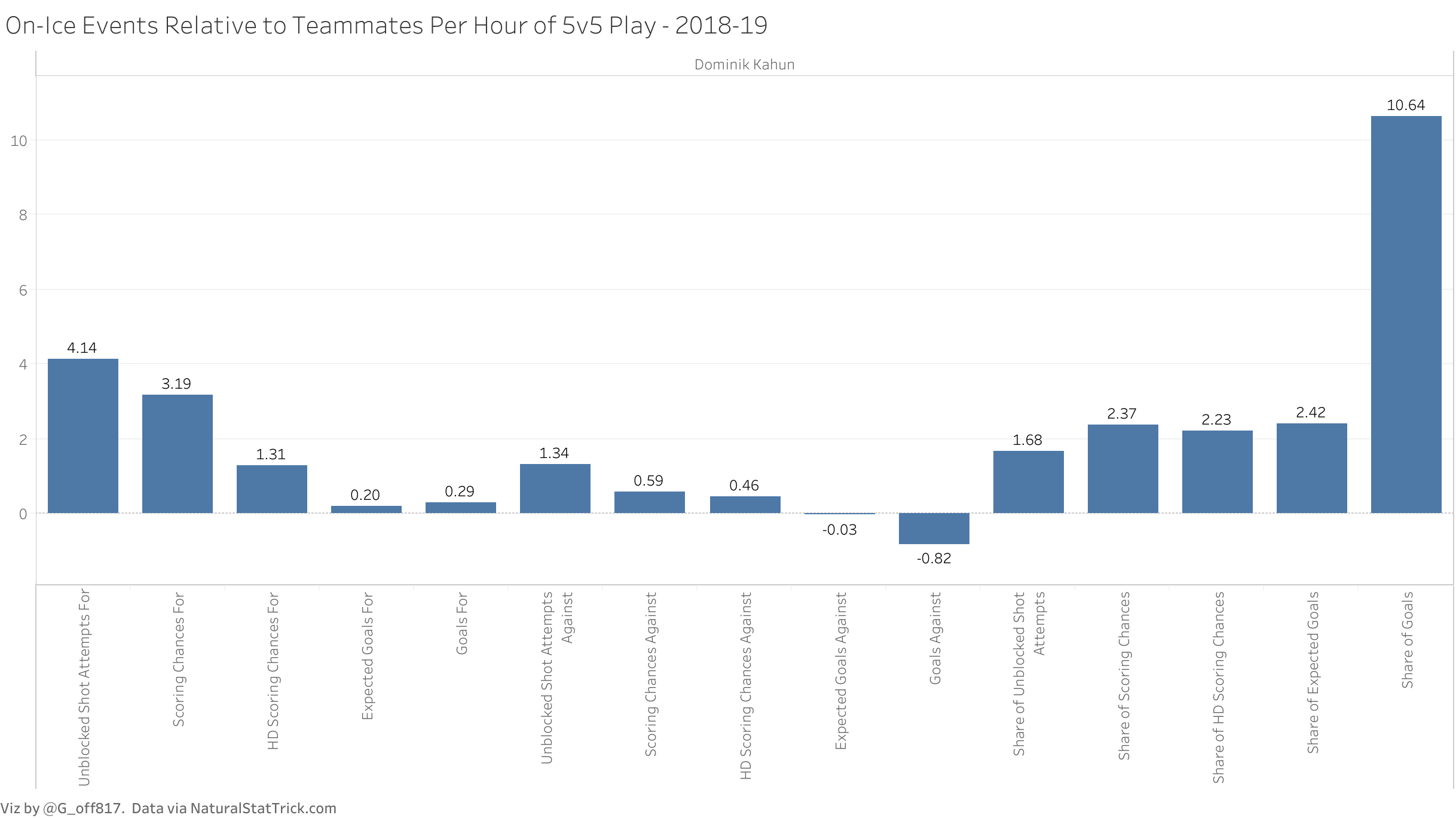This week’s new black is the Penguins right wing situation.
From the moment training camp opened up until now, a few things have been set in stone:
The bottom pairing on D still needs a lot of work.
Matt Murray is your starting goaltender and looks poised for a big pay day.
Sidney Crosby, Evgeni Malkin, Nick Bjugstad, and Teddy Blueger are the 4 centers and will have Jake Guentzel, Alex Galchenyuk, and Jared McCann riding shotgun with them on the left flank.
But with the regular season now just single-digit days away, the Penguins appear no closer to finding permanent homes on lines for their slew of right wingers, namely Patric Hornqvist, Bryan Rust, Dom Kahun, Dom Simon, Brandon Tanev, and Zach-Aston Reese. With 4 of those 6 having the ability to play on both sides of the ice, conventional wisdom (and basic arithmetic) will tell you that one of those 6 won’t be getting a jersey on opening night.
As of right now, it’s anyone’s guess, but this is what HCMS ran with at practice last week when everyone was healthy:
#Pens lines:
Guentzel–Crosby–Tanev
Galchenyuk–Malkin–Rust
McCann–Bjugstad–Hornqvist
Kahun–Blueger–Aston-Reese/SimonD:
Dumoulin–Letang
Pettersson–Schultz
Riikola–Gudbranson
Johnson–Ruhwedel— Wes Crosby (@OtherNHLCrosby) September 24, 2019
As Rossi noted in The Athletic last week, the Penguins have good right wingers to play all throughout the lineup, but are missing that elite punch on the right side that they’ve had in previous years.
https://twitter.com/G_Off817/status/1176101867346153472
Nevertheless, let’s take a look at the 6 candidates to fill out the rest of the Penguins lineup heading into next Thursday’s season opener against Buffalo in order of their 2018-19 season Wins Above Replacement (per 82 games), via Corsica.Hockey. A high level explanation of the WAR model used can be found here:
“WAR, first developed by sabermetricians in baseball circles, is an evaluative metric intended to approximate a player’s impact in units of wins added. A player’s contribution is measured against what a replacement level player is expected to offer in the same circumstances. Replacement level is not uniquely defined, but it is commonly equated to players earning a league-minimum salary. I opt to echo this paradigm. The manner by which wins added are calculated is more abstract still, and is wholly dependent on the sport in question. One can propose a simplistic and incomplete version of wins added in hockey by isolating the shooting component. Such a model may consider a skater’s ability to score goals by comparing their shooting percentage with that of an average replacement level skater.”
More information about WAR, its history, objective, and implementation can be found here, here, here, and here.
Dominik Simon
WAR/82 – 1.33
There is perhaps no player more polarizing on the Penguins than Dom Simon. Not Kris Letang, not Jack Johnson, not Matt Murray.
Dom Simon.
No matter where you fall on the spectrum with Simon, one thing is clear: he’s a good player. Every time he steps out onto the ice, the Penguins instantly become a better team.
In fact, when Simon is on the ice, the Penguins see 2.58 more unblocked shot attempts for, 1.95 more scoring chances, nearly 1 more high danger chance, and nearly a quarter more expected goals generated per hour of play relative to the rest of the team.
Impressively, though, is the suppression-based numbers relative to the rest of the team. With Simon on the ice, the Penguins allow 9.18 fewer unblocked shot attempts, 7.80 fewer scoring chances, and 4.39 fewer high danger scoring chances compared to when he is off of it.
As you’d maybe expect, the teammates he shares the ice with are elevated, too, when playing with him.
There’s a lot here, but the TL;DR of the above chart is this: of the 11 players that Simon shared at least 130+ minutes of 5v5 ice time with, every single player saw a higher share of events take place with Simon compared to without him.
Perhaps the biggest indication of how strong of a player Simon is comes when looking at Jack Johnson, who found himself with a 50%+ share of events when sharing the ice with Dom.
There are a few outliers here, namely in the share of goals scored. Considering goals scored are surrounded by a significant amount of noise, this isn’t all that surprising. Though the end result may not have been there in a few of these instances, the build-up product was.
That’s important.
The knock against Simon, of course, is his lack of goal scoring. Or, more specifically, his inability to control his shooting percentage in his first full season in the NHL as he shot at just 5.98% at 5v5 and 6.6% in all situations last season.
For the sake of comparison, league average 5v5 shooting percentage clocked in at 8.05%, while coming in at 9.48% in all situations.
On a micro-level, Simon does a lot to help the Penguins as a whole score goals, even if he’s not the one potting them. Per 60 minutes of 5v5 ice time last season, albeit in just over 203 minutes, the trio of Guentzel-Crosby-Simon were on the ice for 5.30 goals for, about 1.5 more goals than any of the other common Guentzel-Crosby-X trios. Sample size is important to consider, but the results were overwhelmingly positive.
This positive play shows up in the video too.
https://twitter.com/G_Off817/status/1158442012112240640
https://twitter.com/G_Off817/status/1158444272691175425
To that end, Simon’s 18 total assists and 12 primary assists at 5v5 were the 5th most of any Penguins forward last year, while his 25 5v5 points ranked 6th, just two behind Bryan Rust in about 83.5 fewer minutes played.
Adjusting for that at a rate of 60 minutes of 5v5 ice time (out of the 14 Penguins forwards that played 400+ minutes), Simon’s 1.24 total assists and 0.83 primary assists per hour ranked him 4th behind Crosby, Malkin, and Kessel, while his 6th most 1.72 total points per hour situated him behind Crosby, Guentzel, Malkin, Kessel, and Aston-Reese.
All that is to say that Simon helps drive play and helps drive goal scoring, even if he himself isn’t putting the puck in the net.
But if the Penguins are scoring goals, does it really matter who scores as long as someone does?
It shouldn’t.
Zach Aston-Reese
WAR/82 – 0.83
Zach Aston-Reese is a curious one.
Injuries have plagued him, having played just 59 games over the last two seasons, including just 43 last year.
He was effective in those 43 games, scoring 8 goals and 17 points in all situations (6G-9A at 5v5), while playing a decent amount with Evgeni Malkin and Phil Kessel. Of his 494:07 of 5v5 play, 208:37 came with Kessel (more than any other skater) and 180:04 came with Malkin (second-most among all skaters).
| Zach Aston-Reese | With Malkin and Kessel | Without Malkin and Kessel |
| TOI | 159:04 | 264:31 |
| Share of Unblocked Shot Attempts | 51.42% | 50.00% |
| Share of Shots on Goal | 52.66% | 50.39% |
| Share of Expected Goals | 57.55% | 50.68% |
| Share of Scoring Chances | 59.20% | 44.44% |
| Share of High Danger Scoring Chances | 57.63% | 53.57% |
As a line, you can see here that they controlled play on top of out-scoring their opponents 7-5. Sample size here is critical, but those results were promising in that short amount of time.
In the 264:31 away from those two, ZAR found himself on the ice for 11 goals for and 5 against, despite seeing just 22.70% of faceoffs in the offensive zone.
Though we only saw the 25 year old in 43 contests, it was enough to see him earn a 2 year, $2M contract this summer just prior to his arbitration hearing.
That contract, coupled with the Penguins forward depth now (and at the time) made the Brandon Tanev (more on him in a minute) signing all the more baffling.
Based upon the data, it appears that the Penguins got in Brandon Tanev what they already had in Aston-Reese: and effective forechecker and solid defender. ZAR added more in the way of offensive production in his 43 games last season, too, and had shown to be better in the defensive zone (above via HockeyViz.com).
A fully healthy season may see ZAR take that next step in his professional development, but with the additions of both Tanev and Dominik Kahun (more on him later too), the Penguins are going to end up with a good winger sitting in the pressbox on a regular basis (barring a trade) and ZAR may be that odd-man out.
Patric Hornqvist
WAR/82 – 0.75
Absolutely no one on the Penguins roster is due for more of a bounce back season than Patric Hornqvist.
He had a slight down year, which you can likely chalk up to dealing with a rash of injuries. In particular, he suffered approximately 875 concussions last year.
Without getting too far into the weeds with 72, you can read all of the same stuff that would end up in this section in a separate post written earlier this summer.
In essence, though he did have a slight downturn in some areas of his game, he found himself hovering around his career averages with the Penguins. A happy and healthy offseason should do him some wonders in getting back to being a (more) dominant force at 5v5.
Perhaps the bigger question is what is role is going to be on the powerplay on top of whom he plays with at 5v5.
There’s a case to be made for every combination and permutation of the Pens top unit. Whether that be utilizing 2 defensemen, fitting your best goalscorer (Jake Guentzel) in there, Hornqvist’s history of success as one of the best net front players on Earth, and Alex Galchenyuk’s existence as Phil Kessel’s replacement.
And with Hornqvist over the past 3 seasons, the Penguins powerplay has been electric.
Since the start of the 2016-17 season, the Penguins have seen 1222:43 of powerplay time across 246 games with Hornqvist playing about half of it (646:07) across 209 games. That 575+ minutes where Hornqvist wasn’t on the ice, whether that be through injury (37 games) or with the 2nd unit on the ice. Keep that in mind here.
An important thing to understand here is just how much working on the powerplay is “unit-” based rather than individual-based. That is, Hornqvist’s PP ice time has almost exclusively been with Crosby, Malkin, and Kessel over the last three seasons, whereas someone like Jake Guentzel only saw time with that group when Hornqvist was out of the lineup or under-producing, amounting to about 184 minutes (Guentzel and Hornqvist have played just over 66 minutes of PP time together in total since 2016-17).
To that end, last season was the closest we’ve come to having an even split of time with the top unit between the two. For Hornqvist, almost all of his 189+ minutes on the powerplay came with the top unit. Guentzel, on the other hand, saw roughly 100 of his 176:09 with the top unit, accounting for the majority of his top unit PP time.
It’s tough to measure much based upon those sample sizes, but given Hornqvist’s history of success with the Penguins top unit, the Pens may get the most out of the remaining 4 years of the Swedish battering ram’s $5.3M AAV contract by playing him on PP1 with Jake Guentzel rather than one or the other.
Brandon Tanev
WAR/82 – 0.71
It’s no secret that a large swath of the fanbase, present company included, wasn’t a big fan of the Tanev signing.
It had absolutely nothing to do with his playing ability and everything to do with the term and money thrown his way and the myth of needing to be active on July 1st.
For a 27 year old career 4th liner who, only last year, saw his average ice time per game jump above 12 minutes (14 and change last season) and has never seen more than 12 minutes of 5v5 ice time per game over his 195 game NHL career, 6 years is far too long and $3.5M per year is far too much for depth.
This is especially true when you compare him to the likes of Bryan Rust (more on him in a minute), who scored 28 points in 57 games in 16-17, 38 in 69 (nice) in 17-18, and 35 in 72 last season. Tanev, on the other hand, recorded just 29 points in 80 games this past year, the first “full” season he’s gotten under his belt in the NHL.
Now, that’s not to say there’s nothing to like about Tanev the player. Per 82 games, he added 0.71 Wins Above Replacement last season. He checks all of those boxes that GMJR and the Penguins are after in their pursuit of being harder to play against. That is, he’s fast, is responsible defensively, kills penalties, and hits like a brick house.
In fact, only 2 forwards in the league recorded more hits than Tanev delivered last season, while only two forwards blocked more shots than Tanev as well.
But perhaps more importantly is his defensive prowess and how he’s evolved over his career, via HockeyViz.com:
The drag on offensive (top) is a bit concerning, but his growth defensively (bottom) from being about average to being solid (noted by the deep, dark blue and the -8.3%) is encouraging.
This shows up in the relative stats, too.
Relative to the rest of the Jets last season, Winnipeg saw just under 2.5 fewer unblocked shot attempts and scoring chances generated per hour of play with Tanev on the ice versus when he was off of it. His defensive play, though, was where he shined and help boost the increase in overall share of events, setting himself apart from Aston-Reese in this regard.
Greater still is the fact that he’s been so solid defensively when starting just 43.69% (17-18) and 42.72% (18-19) of his shifts in the offensive zone.
And using PuckIQ.com to break down his quality of competition, we can see just how good he was against various tiers of competition at 5v5:
| Brandon Tanev vs. Tier | Elite | Middle | Gritensity |
| TOI Against Tier | 363.78 | 345.38 | 231.93 |
| Share of Dangerous Unblocked Shot Attempts | 51.90% | 47.30% | 50.60% |
| Share of Dangerous Unblocked Shot Attempts (Relative to Teammates) | +4.90 | +3.70 | +1.20 |
| Dangerous Unblocked Shot Attempts Against Per Hour (Relative to Teammates) | -11.68 | -8.56 | -2.24 |
A few noteworthy things here. First, Tanev performed admirably against Elite competition, whom he played the most against, controlling 51.90% of the dangerous unblocked shot attempts that took place. Relative to the rest of his teammates against Elite competition, that success comes out to a staggering +4.90.
That’s impressive.
It’s also impressive that the Jets saw nearly 12 fewer dangerous unblocked shot attempts directed towards goal with him on the ice compared to when he was off of it against Elite competition and nearly 9 fewer against Middle competition.
The obvious question is the impact Adam Lowry, one of the best shot suppression centers in the league, had on Tanev’s numbers. We isolated Tanev using HockeyViz above, but the point remains that it’s tough to gauge Lowry’s impact overall. Over the last 3 seasons in which Tanev has played, he saw 1382:55 of his 5v5 ice time with Lowry and 400:58 away from Lowry, with just 93:48 coming away from Lowry last season.
Tanev has gotten better as the years have gone by, but the overarching issue is that in the 400:58 away from Lowry in his career, Tanev has seen his share of unblocked shot attempts with Lowry drop from 51.76% to 43.45% away from him. This trend is seen across all data buckets, including expected goals (53.65% with to 40.36% without) and high danger scoring chances (56.54% with to 39.82% without).
Seeing that type of cratering is obviously disconcerting, but if he brings the shutdown game to the Penguins that he brought last season to the Jets along with the speed and physicality he’s known for, he could pose a serious threat to his opponents for a portion of his contract.
Bryan Rust
WAR/82 – 0.17
One forward player’s name that perpetually popped up in the sacrificial cap dump scenarios all summer was Bryan Rust’s.
It’s not a shocker, either. At $3.5M per year for the next 3 seasons, being a versatile winger, and having the classification of “clutch” attached to his name, he’s a marketable asset that would benefit 30 other teams tomorrow.
But his 2018-19 season left a lot to be desired.
He struggled with scoring goals just the same as Simon or Hornqvist, but the difference between those three was the Penguins play when each was on the ice.
Where Simon and Hornqvist saw issues with scoring, the Penguins still dominated play when either (or both) was on the ice.
When Rust was on the ice, the Penguins benefitted more when he came off of it, both relative to the rest of the league (below) and relative to the team (above).
In fact, when Rust was on the ice, the Penguins gave up 2.37 more scoring chances and 1.56 more high danger chances compared to when he was off of it.

The truth is, last season was his worst defensive season as a Penguin, negating any and every positive impact he had pushing the puck forward as he and the Penguins hemorrhaged shots from the doorstep last season, both relative to the team and relative to the rest of the league (red area in the bottom right corner).
Just like some other guys on this list, the Penguins don’t necessarily need Rust to be a barnburner in the goal scoring department, but do need these guys to be solid on-ice contributors in order to allow those that are barnburners in the goalscoring department to do just that:
Score goals.
And for Rust, he’ll need to be better this year than he was last year to allow that to happen regardless of what line he plays on.
Dominik Kahun
WAR/82 – 0.13
Finally, we come to Dominik Kahun. Having been marketed as a Swiss Army Knife sort of forward that can play in all 3 positions on any line following his acquisition from Chicago in exchange for Olli Maatta, his role and spot in the lineup for the season have both yet to be defined.
Early in camp, he got a shot on Crosby’s RW, but failed to do much with it. He’s since seen time on all 4 lines, most recently filling in on Malkin’s left (with Rust on the right) in place of the injured Alex Galchenyuk.
From his speed to his versatility to his “hockey IQ,” there’s a lot to like about Kahun.
Having made the jump to North America last season at age 23, he netted 13 goals and 24 assists across 82 games, playing about 40% of his 5v5 time with the likes of Jonathan Toews and Alex DeBrincat.
On the wing with Toews centering him and relative to the rest of the team, he found success.
The Blackhawks saw more events take place per hour of 5v5 play with Kahun on the ice versus when he was off of it and just slightly more against under those same parameters.

Offensively, relative to the rest of the league, the results were similar. Defensively, though, Kahun saw much more success in helping shut teams down when comparing it relative to the rest of the league. The highway down the middle of the ice was virtually uninhabited when he took to the ice for the Hawks.
But one year is not a lot of information to draw conclusions from and, given his slightly underwhelming preseason so far, tapering expectations for his first year with the Penguins should be encouraged.
All that being said, one of these guys will have to be the odd man out when/if everyone in the forward group is healthy and on the roster.
It’s a good problem to have.
Though you hate to see good players sitting in the pressbox, good players sitting in the pressbox helps combat complacency that may or may not have plagued this team last season. At any point, someone is lurking and hungry and ready to take any one player’s job.
It’s a luxury the Penguins haven’t had up front in quite some time.
Add The Sports Daily to your Google News Feed!

